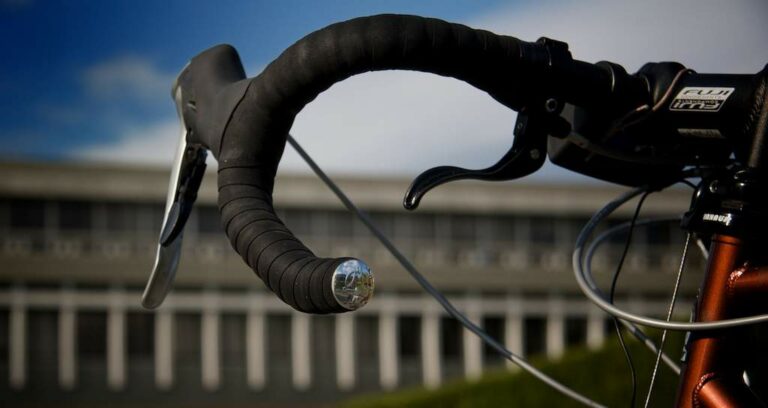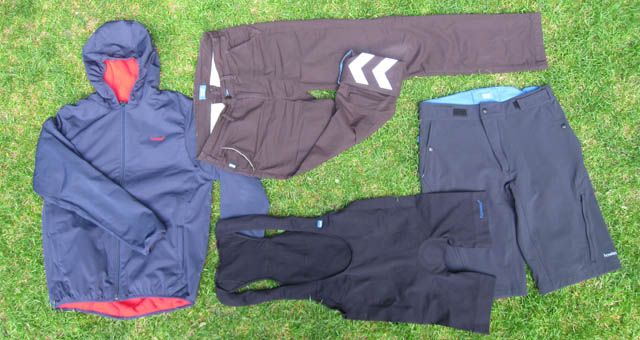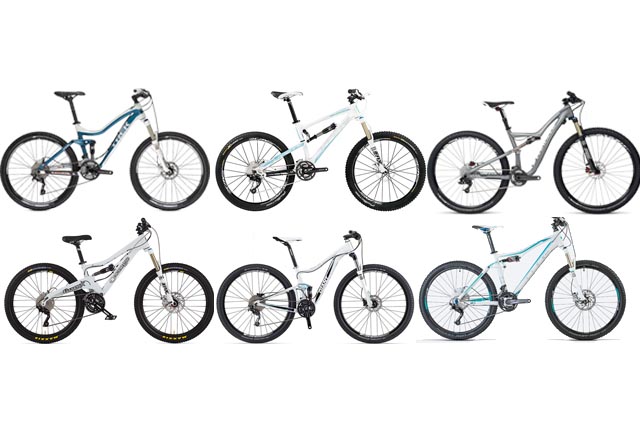Riding in a group on the road is one of the most useful skills you can have; it can be more important than fitness. Jo McRae explains.

An obvious progression from the skills associated with leading and following, are those required to ride safely and confidently in a group. If there is one thing we females are accused of most it’s that we lack confidence or are nervous in a group. And frankly, this is often true.
Bike handling
There are some fairly obvious reasons behind this rather than merely the ‘frailty’ of our sex. I think it’s fair to say that overall our bike skills are not as good as our male counterparts, even when riding on our own, before considering the additional elements involved in riding with others. I believe this is simply because we have usually spent less time messing about on bikes as kids and teenagers, and has nothing to do with our cycling potential. It is of course a sweeping generalisation, but we do need more skills-based practice to catch up, sometimes as a priority over fitness work.
Confidence is key
I think overall we are also less confident and a little more nervous than men, and we respond more emotionally when under pressure with other riders around us. That perhaps makes us more likely to overreact or blame ourselves, which in turn leads to a worsening of this lowering of confidence and ability. Putting these two things together it’s no wonder it can sometimes be difficult to know how to improve your group riding skills. The challenge can seem quite a big one.
Graft
Firstly, believe that you can improve and have a mind-set and action plan that will help you achieve your goal. Secondly, surround yourself with supportive people, some of whom should be more experienced and have greater skill than yourself, who can help you to feel more relaxed and confident in the group riding environment.
Riding in Pairs

Riding in a line of pairs is the acknowledged protocol for group riding and requires you to be comfortable riding next to, as well as just behind other riders. Breaking this element down by practising side by side riding with a friend can make it easier when you come to ride with pairs in a sequence, as you would in a bigger group.
When riding out with your training buddy you can practice both leading and following but also then riding alongside each other, swapping positions and allowing perhaps half a handlebar width between you at most. If you leave more space than this out on the road it can leave the outer rider way out in the traffic, while in a sportive or race it may make a tempting gap for someone more confident to try and squeeze in between.
Shoulder to shoulder
On a quiet road you can practice deliberately but gently touching shoulders or elbows as you ride alongside each other, giving you the confidence that if you should accidentally bump into someone on a ride, nothing much happens so long as you stay relaxed and focus on holding your line. Another good drill if you are a little more experienced is for one person to put their arm around the other rider’s shoulder.

Once you are comfortable in a pair you can add another pair behind or in front of you which of course in a sense doubles the difficulty. It is this three dimensional awareness that sometimes poses problems, where you need to develop really good peripheral senses to ride close and relaxed side to side as well as front to back. All the elements in my ‘leading and following’ piece apply, but you have the side to side dimension as well.
Teamwork within a practising group is essential and everyone has to acknowledge that the shared goal is to stay together and ride well together. This may mean some of the better riders being a little more patient, and perhaps slower, while some of the less able riders will need more support. Any change of speed should be gradual so that the group can move as a whole and not be disrupted by erratic individuals. In the early stages of a practice session it is worth communicating how everyone is feeling. As soon as, or before you are struggling to keep up, you need to speak out, and stronger riders should keep checking how everyone is doing.
Changing roles
Traditionally a group will either ‘rotate’ a change at the front or change the pair. In a rotation the front right rider will slip to the back and the front left rider will move across and everyone reshuffles accordingly. In the pair change both front riders slip to the back for the new pair to take the front.
In a group riding practice it makes sense for everyone to have a go at every role, the front, the middle, and the back, to create the empathy needed to support everyone in the group. Positions need not change too quickly at first but allow everyone to get a sense of settling into the new position.
Start small and get bigger
In an organised or semi organised practice I think it makes sense to pair up first and then, as confidence builds, work in multiples of two, perhaps starting with six riders to offer a front, middle, and back position. Also as ability improves you can close up the gaps further making the group tighter as you go on building confidence.
Closed circuit vs. open road
It is legal to ride two abreast “where it is safe to do so” on the open road, but of course it is not always safe to do so. Out on the road may not be the best place to learn when there is the added stress of traffic and changing road surfaces and so on.
If you get a chance it is well worth taking part in some organised training sessions on a closed circuit or track where these group riding elements are an essential part of the practice and can be developed further. There are several well established women-only training sessions available in the South East including those at Cyclo-park in Kent and the Mule Bar Girls sessions at Herne Hill Velodrome. Look out for your local groups and support them in supporting you in improving your group riding skills.





